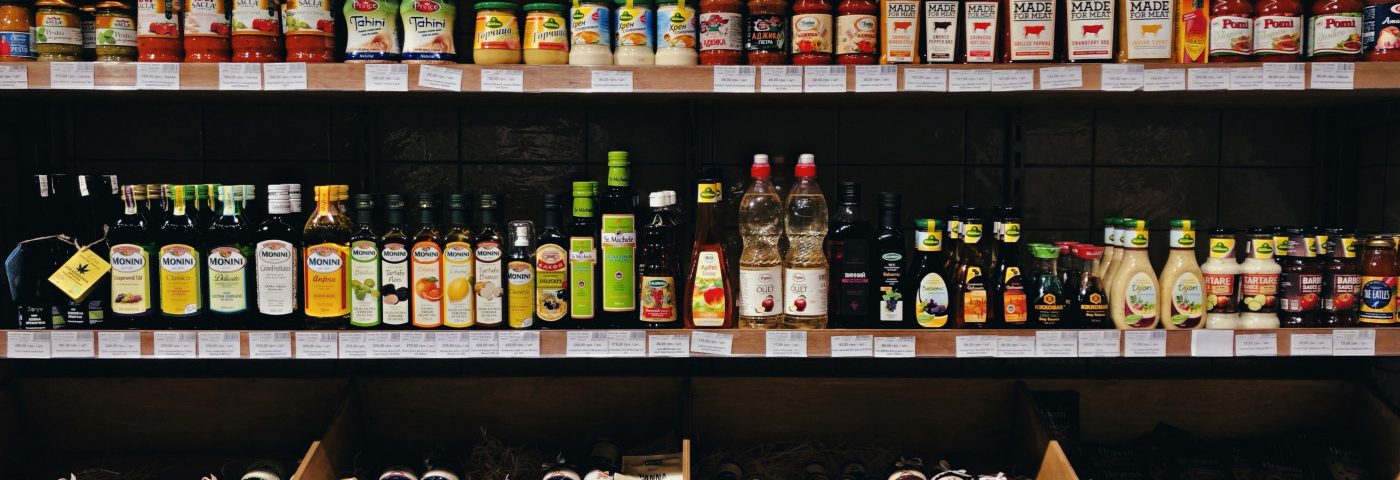Food labels on supermarket websites in the U.K. have high rates of misleading, incomplete, and inaccurate information relating to protein content, which could affect the metabolic control of people with phenylketonuria (PKU), a study has found.
The study, “Protein Labelling Accuracy for UK Patients with PKU Following a Low Protein Diet,” was published in the journal Nutrients.
The first-line treatment to manage PKU is a diet low in phenylalanine, the amino acid that builds up to toxic levels in cells due to a deficiency in the phenylalanine hydroxylase enzyme.
Dietary treatment involves avoiding foods with high amounts of protein such as meat, fish, eggs, cheese, soy, and nuts, and limiting foods such as milk, cereals, and some vegetables. For patients and caregivers, any protein intake needs to be calculated, measured, and controlled.
However, inadequate, misleading, or unclear food labeling about protein content, especially with prepared (manufactured) foods, can deter patients or caregivers from purchasing specific foods. Moreover, inaccurate or ambiguous food labeling may cause unexplained and poor blood phenylalanine control.
Nearly every supermarket in the U.K. offers online food purchases, yet food labeling and information on websites remain unclear and unstudied for people on special diets.
Thus, researchers based at Birmingham City University in the U.K. evaluated the accuracy of protein labeling on packaged manufactured foods from supermarket websites for foods that are typically part of a phenylalanine-restricted diet.
As some PKU patients may purchase “free-from foods” that often contain lower protein, particularly gluten-free foods, this group of foods was investigated as well.
Foods were selected based on common usage and popularity, as well as their suitability in protein-restricted diets, with a protein content of less than 10 g of protein per 100 g total food weight.
A total of 462 packaged foods were examined using the information provided by major U.K. supermarket websites, including Asda, Morrisons, Sainsbury’s, Tesco, and Waitrose. Of those selected, 159 were “free-from” foods (all gluten-free) and 303 were “regular” foods.
The team then looked for misleading, omitted, or erroneous labeling information, which included labels with missing protein content or portion size; labels stating 0 g of protein per portion even though its content was more than 0.1 g per 100 g; protein content for each portion described as less than 0.5 g with no other information; or a discrepancy between the protein content and other ingredients listed.
Overall, 255 of the 462 foods (55%) had misleading, omitted, or erroneous labeling. There were fewer inaccuracies in gluten-free foods (43%) compared to regular foods (62%), especially for bread, bread products, and flours.
Of the 146 (32%) foods that required further cooking or preparation, 10 (7%) did not specify if the protein analysis per 100 g of food weight was for the final prepared product or for the product as sold. This increased to 20 (14%) when labeled per portion size.
In 85 (58%) foods requiring preparation, protein content was given for uncooked weight only but not for cooked weight. In contrast, 48 (33%) foods listed protein values for cooked but not uncooked foods. These limitations were commonly found with regular foods compared to gluten-free foods.
A total of 125 foods (27%) did not provide a weight for estimated portion size. Again, this occurred more often with regular foods than gluten-free items. The protein analysis of the portion size was not given in 47 (10%) foods. For foods that required further cooking or preparation, the protein content was omitted per cooked portion size for 51 foods (35%) or omitted per portion as sold in 38 (26%) foods.
Cooking instructions were missing in 12 (8%) food items, and net size was not included in 21 (5%) foods.
Misleading protein analysis was found in 17 (4%) foods, with either the protein content per portion listed as 0 g of protein (when analysis per 100 g stated a protein content of more than 0.0 g), or the protein content per 100 g or per portion was listed as below 0.5 g but did not provide a specific protein amount. Nine (2%) foods did not give an ingredients list.
Foods needing preparation included 18 (12%) foods that stated the protein analysis only after a product had been prepared with milk, even though milk was not part of the listed ingredients. This type of protein analysis “portrayed these foods to be unsuitable in a low-protein diet,” the researchers wrote. Furthermore, the protein content of the dry ingredients was not provided.
Food labels with one inaccuracy were found on 96 (32%) items, two inaccuracies were found in 95 (37%) foods, and three inaccuracies were seen in 41 (16%) foods, “which affected the interpretation of the food protein content,” the scientists added.
Bread and bread products, cakes, and biscuits commonly omitted information about portion sizes, and pasta and vegetables had missing details about protein content in cooked or uncooked items. The protein content in desserts and some regular and gluten-free foods were only provided after adding milk.
“There was a high rate of incomplete, misleading, or inaccurate data affecting the interpretation of the protein content of food items on supermarket websites,” the investigators concluded. “This could adversely affect metabolic control of patients with PKU.”
“Although food producers and business operators are expected to provide information to consumers that is clear and accurate, little attention is paid to the exactness of protein food labelling,” they added.
The team recommended that food labeling “regulations should be reconsidered, with more attention given to monitoring the accuracy of information provided by supermarket websites.”

